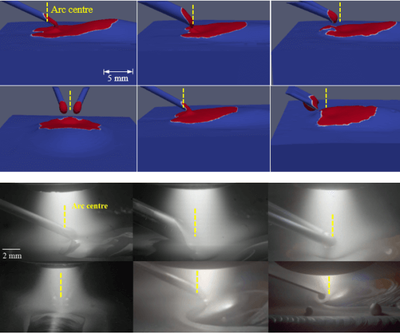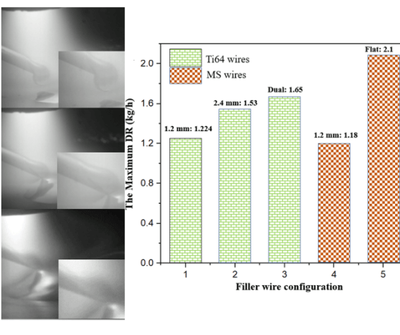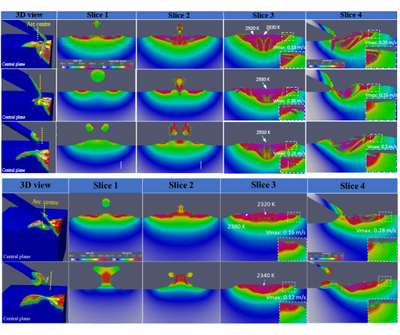


Thermal Fluid Dynamics of the Effect of the Filler Wire on w-DED
The influence of filler wire configuration, such as size and geometry, on the deposition rate (DR) and bead formation, has been studied in wire arc-based directed energy deposition (WADED), but the fundamental physics underlying its effect on wire melting and melt pool dynamics remains unclear. In this paper, a series of plasma arc-based DED (plasma-DED) experiments were conducted to investigate the impact of five different filler wire configurations on DR and bead dimensions. The coupling behaviours of wire melting, metal transfer and melt pool dynamics under the five filler wire configurations were also simulated numerically using the authors' recently developed wire-feeding model. The calculated wire melting and bead cross-sections are consistent with the experimental images and measurements. The results demonstrate that the filler wire significantly affects the highest DR by altering wire melting and metal transfer behaviours through changes in arc energy absorption. The filler wire with a rhombus geometry which is closer to a Gaussian-like arc distribution than the flat wire was shown to get higher DR and more stable metal transfer. Furthermore, different filler wire configurations lead to distinct melt pool behaviours, including temperature distribution and flow velocity, due to various metal transfer behaviours and arc shading effects. This study sheds light on the fundamental physics underlying the impact of filler wire on wire melting and bead formation for the first time. The methods and findings can guide improving DR and controlling bead shape in the plasma-DED process.
X. Chen et al., “Thermal fluid dynamics of the effect of filler wire on deposition rate and bead formation intending plasma arc-based DED,” J Manuf Process, vol. 107, pp. 199–209, Dec. 2023, doi: 10.1016/j.jmapro.2023.10.020.
Information
- Research Area:Process Modelling
-
Investigators:
Chong Wang
, Gonçalo Pardal, Rongdong Qu, Xin Chen, Stewart Williams - Publications:https://doi.org/10.1016/j.jmapro.2023.10.020
